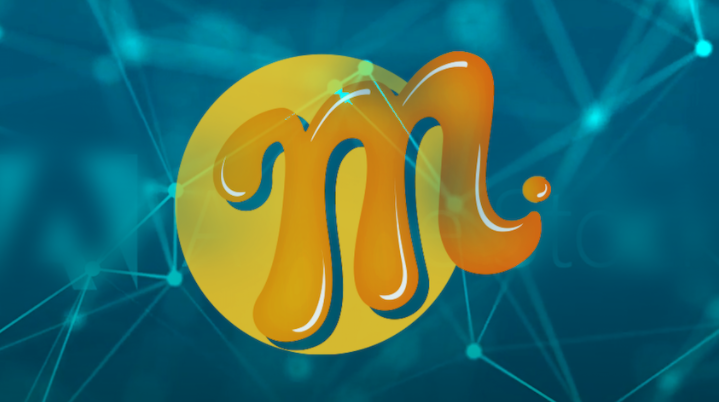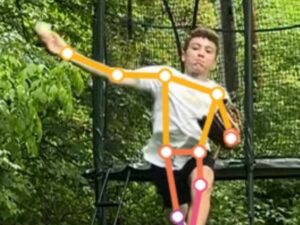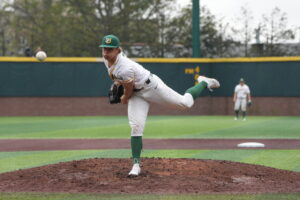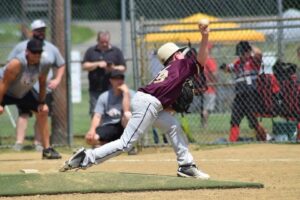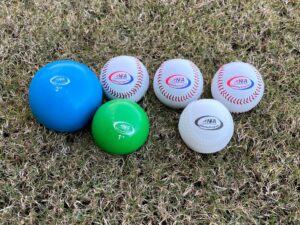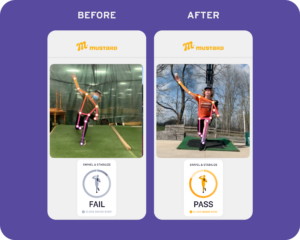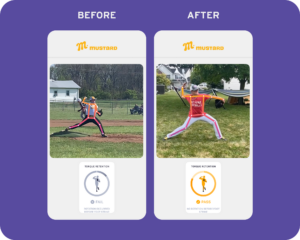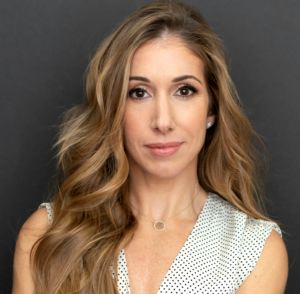At the start of Cole Hamels’ big-league career with the Philadelphia Phillies, he would visit independent pitching coach Tom House for a motion-capture analysis of his biomechanics each January, prior to the start of spring training. He would leave with a to-do list of things to work on, along with a clear plan of exactly how to work on them. After each of his starts, Hamels would open his motion analysis video on his laptop and set it next to the team computer, which would run video of that night’s outing. “I had my motion-capture on my computer, and I would compare it to the regular video the team had,” Hamels recalls. “I had my own checkpoints, and that was how I had to learn.”
Now, 14 years later, at least two-thirds of baseball teams have some sort of motion analysis system in place for their pitchers, along with an analytics department that assesses opposing hitters. However, very few big-league pitching coaches, who for decades have relied solely on their eyes to assess pitching deliveries, have any scientific or research-based background in biomechanics and do not know what to do with the data provided by this advanced technology.
Enter Mustard, co-founded by House, which is the only motion analysis app that will provide same-session feedback and personalized instruction based on biomechanical data from the world’s best athletes. This will give all Mustard users an advantage that even many big-leaguers don’t yet have.
House, known as the father of modern pitching mechanics, has the most extensive biomechanics database in the world: four decade’s worth of 3D motion analyses of some 900 professional pitchers, some on VHS tape, some on CD, and some digital. Many of them are of elite pitchers like Nolan Ryan, Greg Maddux and Randy Johnson. All of these analyses have been digitized and are being used to train Mustard’s artificial intelligence engine to recognize when a pitcher is getting to the right place at the right time with the right sequence of movements in his delivery. As with all AI engines, the machine learning algorithms are only as good as the data put into the system, and no one has more or better data than House. Mustard’s AI engine then looks for patterns in that data to use as the basis for decisions about future data.
“Without House’s biomechanical data, you wouldn’t know what to do with your skeletal data,” says Mustard CTO Kevin Prince. “And because the AI engine improves at the rate in which you feed it, the more users that enter videos – and thus, biomechanical data – into the system, the more it will continue to train itself to recognize, say, a good release point. This is very important so the system can account for different age ranges and body types.”
The biomechanics of each pitcher are broken down into 11 measurables:
1. Timing
2. Sequencing
3. Balance and Posture
4. Leg Lift and Body Thrust
5. Stride, Momentum, Leap and Land
6. Opposite and Equal
7. Hip/Shoulder Separation and Delayed Shoulder Rotation
8. Stack and Track
9. Swivel and Stabilize
10. Angle of Wrist/Forearm
11. Release Point and Follow Through
“Our ultimate model is a 6-foot pitcher, striding six feet in one second or less, with the ball coming out of his hand .15 to .25 seconds after foot strike,” House explains. “That is what the most healthy and most successful pitchers have done, so the goal is to be as close as possible to this benchmark.”
We know. You’re wondering who the epitome of this perfect pitcher might be. Take a guess? It’s Maddux, and he pitched 23 seasons in the big leagues with only one, 15-day stint on the disabled list. In 19 of those seasons, he was in the top-10 in games started, and he retired with a 355-277 record and 3,371 strikeouts.
The first step for a pitcher who wants to use the Mustard platform is to sign up for early access on the Mustard home page to be one of Mustard’s beta testers. Once accepted, the pitcher will upload cell phone-captured, 2D-video of his or her delivery from two different angles: first, from slightly to the first-base side of home plate for lefties and slightly to the third-base side of home plate for righties, and second, a side-on view from first base for lefties and third base for righties. The pitcher will also enter their height, age, weight and shoe size. Then, the Mustard app will use an advanced pose estimator to extract skeletal data about the positioning of the head, eyes, ears, hips, shoulders, elbows, wrists, knees and ankles. It then projects that 2D data onto the 3D model created by the Mustard AI engine, which gives each user a personalized Mustard Report Card (MRC) detailing the biomechanics of their delivery.
“We measure timing first, then kinematic sequencing and then the mechanical variables,” House says. “Each one of those things has a weighted mean attached to it. We add it all together and produce a numerical value in efficiency that is representative of your pitching mechanics.”
Then, using House’s decades of coaching expertise to inform its decisions, Mustard’s AI engine will give each pitcher a customized report card and plan to improve his or her flaws, just like the one he has sent Hamels off to spring training with each year of his career. For example, if Mustard’s AI says your head is moving two inches right-to-left before foot strike, since House’s data confirms each inch of inappropriate head movement causes a loss of two inches of extension at release point, the Mustard recommendation engine will offer a performance plan of drills and exercises to reduce inappropriate head movement.
Over time, Mustard’s platform will also compare the videos you upload to each other, so you can track your improvement and progress over time. “We call it ‘Fail Forward Fast,’” says House. “No matter who you are, you can always improve. We learn the most from when we don’t get it right, and that drives the learning and inspiration to get it better next time. Mustard is all about the process, and that leads to better outcomes.”
House’s instruction teaches pitchers to be their own best, at any level, which can help to bridge the gap between data and outcomes. “Often, the analytics department produces a sheet on how to get a hitter out, and I’ll say, ‘But I can’t do that,’” Hamels says. “Because my biomechanics don’t allow for a fastball to ride, and I can’t throw a slider to the back foot. That’s what’s great about Tom. He helps you identify what you’re good at, and then makes sure you’re great at it.”
Mustard will help pitchers at any level improve, from Little Leaguers to MLB veterans like Hamels, who have learned just how invaluable immediate feedback really is.
“As a pitcher, you have a limited amount of pitches to throw each day, and if it’s going badly, you don’t get them back,” he says. “So if you can correct on a moment’s notice, you’ll see guys start to get better, stay healthier and be smarter and more aware so they’re able to correct themselves before things go wrong, both with their health and with hitters in games. Success in the big leagues is about making adjustments on the fly, not waiting until after an inning, and if you can have immediate feedback during bullpens from an app like Mustard, and get used to those feelings and learn where you go wrong, that’s a huge advantage.”
If you’d like more great content from Mustard, and you’d like to evaluate and improve your own pitching mechanics, download the app today.

